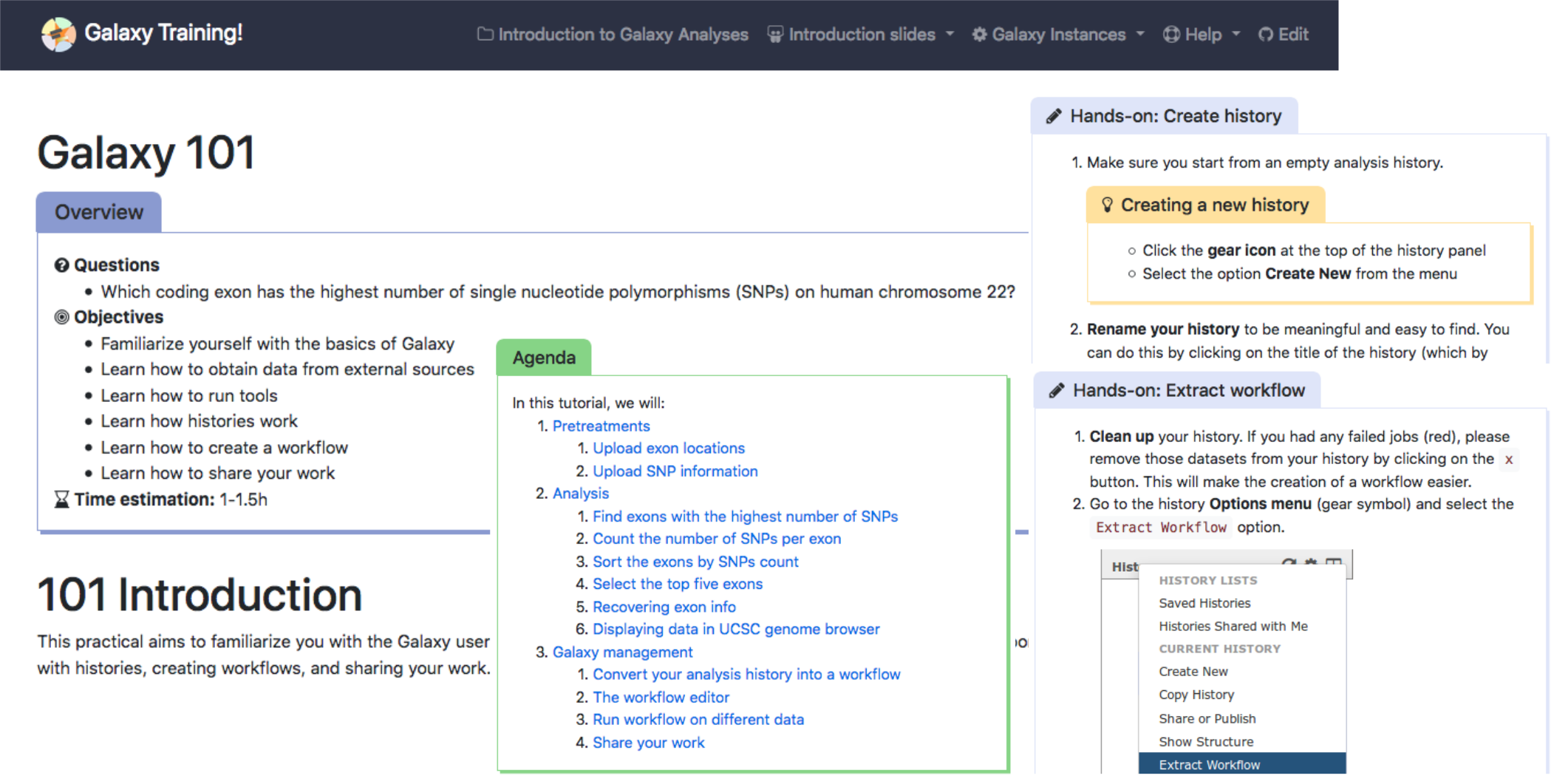Tutorial of the Month: "Galaxy 101", selected by Yvan Le Bras
The Galaxy community is developing and maintaining a collection of tutorials that are designed to be interactive and are built around Galaxy: https://training.galaxyproject.org. These tutorials can be used for learning and teaching how to use Galaxy for general data analysis, and for learning/teaching specific domains such as assembly and differential gene expression analysis with RNA-Seq data. These materials are targetting both self-paced individual learners and instructors.
To help highlight our tutorials and the training effort of the community, a member of the community will select every month one tutorial and explains in the Galactic Blog why they select this tutorial.
Galaxy 101
This month, the Galaxy contributor of the Month!, Yvan Le Bras, selects and presents a tutorial: "Galaxy 101", from the topic "Introduction to Galaxy Analyses":

The full version is available on the training website: http://training.galaxyproject.org/topics/introduction/tutorials/galaxy-intro-101/tutorial.html
Yvan, we are looking forward to learn more about your choice!
We learn about you and Galaxy in the Galaxy contributor of the Month! post. Can you do a small recap here?
Since 2010, the year I discovered Galaxy, I obtained my PhD, begun to focus on Bioinformatics/Biostatistics through NGS and proteomics approaches, animated a western France Galaxy group of users, given dozens of hours of Galaxy training, created the French CeSGO e-Science Center, co-founded the Enancio start-up and finally returned to my first love, Ecology and biodiversity conservation through the birth of Galaxy-E initiative thanks to the national "65 Millions d'observateurs" project dedicated to facilitate and extend participation into citizen science projects and now coordinating the national "Pôle national de données de biodiversité" French Research Infrastructure. A big sentence isn't it ;) And... this is the view from my office:

Can you tell us a little about yourself and your relationship to training?
Since my PhD, I'm convinced that training is a key element for science to go faster and further. My first try in 2011 was the creation of a 2 days thematic school on integrative biology... This was a success in the way that this event confirmed the importance of training and putting people, from different domains, from differnet level of skills, exchanging together in good spirits! 2012 was the creation of the western France Galaxy user group, named GUGGO, and the begining of periodic training sessions on unix, SGE, and most importantly introduction to Galaxy, RNAseq data analysis with Galaxy and finally RADseq data treatment with Galaxy, in total I counted 110 hours in 4 years!
Why have you selected this particular tutorial as the tutorial of the month?
I gave something like 30 Galaxy training sessions, always beginning by this introductory tutorial, and this fundamental question:

Writing these lines, I can see Cyril (Monjeaud), with whom I gave almost all the training sessions, face expression as it was always like a game to me to transform this "simple" question into a fundamental research one! Concretly, this is a perfect manner to introduce Galaxy functionnalities, interest, using a "simple" few-steps workflow, dealing with remote datasets, well known data banks (here UCSC), and basic but so important and powerfull pre-processing/filtering tools! For sure kind of tools that a lot of people use on the ~every-day lab life!
Another important point, as instructor, is that datasets are very small, so it's easy to treat it rapidly, even on a training session with 20 people. As I was using this tuto as a basis to introduce all/major Galaxy functionalities, I can remember that the introductory session was something like 1.5h in 2013, and 2.5h in 2016, showing the incredible dynamic there is on Galaxy project and functionalities improvement.
Thanks to Yvan for selecting this tutorial and answering our questions. We would like also to thank Björn Grüning, Clemens Blank, Anton Nekrutenko, Nicola Soranzo, Anne Pajon and Saskia Hiltemann who developed and contributed to this tutorial.
We recommend warmly to go through this nice tutorial, using it for self-learning or during workshops. Enjoy it!